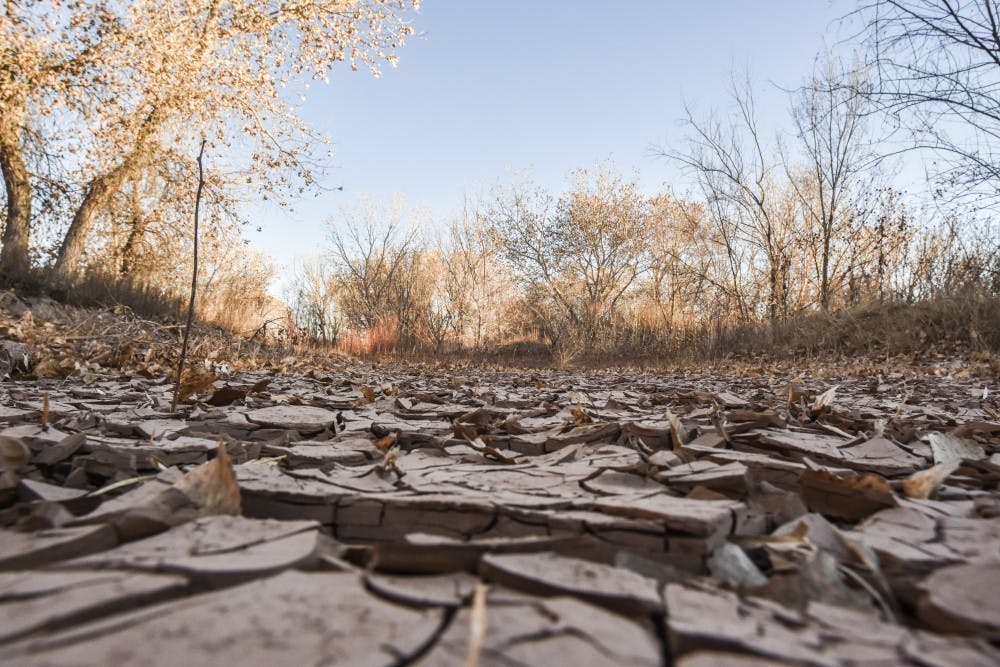For anyone who has lived in New Mexico their entire life, or even just a few years, hearing the word "drought" is no surprise.
The current statewide drought is severely impacting the water levels in the Rio Grande and the aquifer levels.
According to John Fleck, professor of practice in Water Policy and Governance and Director of the University of New Mexico Water Resources Program, there are two types of drought — short-term and long-term. There are differences between the way the two types impact communities, the Rio Grande and the aquifer.
Short-term droughts impact the vegetation and landscape, while long-term droughts drain reservoirs, Fleck said.
“There is no question that it is warmer in Albuquerque and in New Mexico and the mountains in the north...There is less water than there was 50 years ago,” he said.
Most of the water in the Rio Grande comes from snowpack in the Sangre de Cristo Mountains, San Juan Mountains and Chama watershed in northern New Mexico and southern Colorado. The snowpack acts as storage for the water that eventually ends up in the Rio Grande.
Albuquerque is currently experiencing both a long-term drought and a short-term drought. This means that levels in the Rio Grande come spring will be extremely low. It also means agriculture in the Rio Grande Conservancy District will have to rely on water stored from previous years, making farming and other agriculture difficult, Fleck said.
The Rio Grande Conservancy District stretches from below Cochiti Dam to Bosque del Apache, south of Albuquerque.
“We have been in a drought since 2000, 2001 partly due to a fundamental shift cause by climate change,” Fleck said.
UNM Professor of Earth and Planetary Sciences David Gutzler said levels of water in the Rio Grande are relatively normal at this time due to last year’s heavy snows up north. This year’s snowmelt is nearly nonexistent, and this will have big impact on flow levels in the Rio Grande starting this spring, he said
“We are far below normal, and the prospects of making up the snow deficit before warmer temperatures arrive in the spring are getting worse by the day,” Gutzler said.
One of the concerns with having both a long-term drought and short-term drought occuring at the same time is that New Mexico forests are at higher risk of fires when spring and summer months come.
Get content from The Daily Lobo delivered to your inbox
“We are at risk for a very bad fire year. For two reasons — the first that we are in a drought. The second is that last year was a wet year. So there was a lot of fine fuel, grasses and now they're all dried out so they can burn more easily,” Fleck said.
The forests in New Mexico are at risk for turning into something else altogether, he said. Climate change has been causing increasingly high levels of drought. This constant drought has been causing juniper and piñon trees to die off.
According to the NRCS National Water & Climate Center, the water levels in the Rio Grande are projected to be 21 percent of the average flow in cubic feet per second. Fleck said the projection this year could be the lowest year on record.
The people in Albuquerque will be fine, because of groundwater in the aquifer. Albuquerque has been successful in conserving water. In fact, Albuquerque's per capita water use is essentially half what it was 20 years ago, Fleck said.
Still, Gutzler said Albuquerque residents need to be careful with their water consumption in upcoming months, especially once summer comes around.
Megan Holmen is a freelance reporter with the Daily Lobo. She can be reached by email at news@dailylobo.com or on Twitter @megan_holmen.






